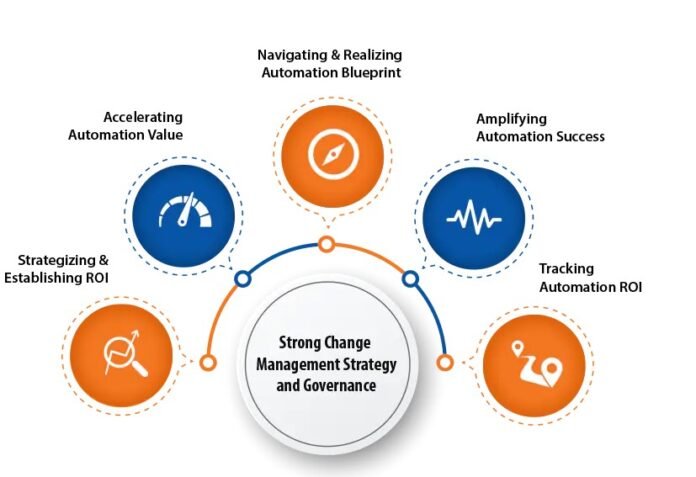Code review involves the critical examination and enhancement of your code’s quality, readability, and security. This practice is instrumental in identifying and rectifying bugs, preventing the accumulation of technical debt, and upholding coding standards.
To optimize the efficiency and effectiveness of code review, employing automation testing tools that automate, streamline, and improve the workflow is key.
This article delves into how code review tools contribute to maintaining coding standards and outlines essential features to consider when selecting a code review tool.
What are Coding Standards?
Coding standards comprise a set of regulations and principles dictating the manner in which your code is to be written, formatted, and documented. Their purpose is to guarantee the uniformity, readability, and maintainability of code across various projects and teams.
These standards may encompass elements like naming conventions, indentation, comments, code structure, error handling, and testing. While certain coding standards are tailored to a particular programming language, framework, or domain, others are more universal and widely acknowledged.
Why Are Code Reviews Essential?
Ensuring Code Quality:
- Code reviews play a pivotal role in identifying and rectifying bugs, code smells, and potential security vulnerabilities.
- Automation of the code analysis process by code review tools aids in early issue detection during the development cycle.
- Maintaining code quality standards is facilitated by code review tools, contributing to the creation of robust and reliable software.
Knowledge Sharing and Collaboration:
- Facilitating collaboration among team members, code reviews provide a platform for constructive feedback and discussions.
- Code review tools enable developers to leave comments, suggestions, and annotations directly within the codebase, streamlining communication.
- Enhanced collaboration through these tools fosters team cohesion and knowledge sharing, leading to better-informed developers.
Code Consistency:
- Crucial for readability and maintainability, maintaining coding standards and consistency across a project is emphasized.
- Enforcement of coding guidelines and style standards by code review tools ensures team-wide adherence to best practices.
- Consistency achieved through these tools simplifies the understanding and maintenance of code.
Risk Mitigation:
- Code reviews and associated tools contribute to mitigating the risk of introducing critical bugs or security vulnerabilities into production code by identifying issues early.
- Integration of code review tools with continuous integration (CI) pipelines prevents the merging of faulty code, reducing the risk of project delays and costly errors.
Skill Improvement:
- Code reviews provide a learning opportunity for developers to enhance their coding skills by leveraging feedback from peers.
- Code review tools empower less experienced developers to benefit from the insights of more seasoned team members, accelerating their growth.
Code Review Metrics and Analytics:
- Valuable metrics and analytics, such as review completion times, code churn, and reviewer performance, are often provided by code review tools.
- These metrics serve to assess the efficiency of the code review process and identify areas for improvement.
How to Conduct a Code Review?
There are four methods for performing code reviews.
● Over-the-Shoulder Code Reviews:
Over-the-shoulder code reviews occur at the developer’s workstation, where an experienced team member walks through the new code, offering suggestions through a conversation. This approach is straightforward and doesn’t require a predefined structure. Over-the-shoulder code reviews were traditionally conducted in person, but with distributed teams, collaborative tools can facilitate this method.
● Email Pass-Around:
For geographically distributed teams, email pass-around has been a traditional method of code review. In this process, a developer emails a diff of changes to the entire development team, often using version control systems for automated notifications. This initiates a conversation where team members can request further changes, point out errors, or seek clarifications.
● Pair Programming:
Pair programming serves as a continuous code review process where two developers work at a workstation. While effective for inspecting new code and training developers, pair programming can be inefficient due to its time-consuming nature, as it locks down the reviewer from other productive work during the session.
● Tool-Assisted:
Tool-assisted code review involves using specialized tools to streamline the code review process. These tools typically help in organizing and displaying updated files, facilitating communication between reviewers and developers, and assessing the effectiveness of the code review process through metrics. Modern code review tools may offer additional functions beyond these basics. Various code review tools will be explored later in this post.
Types Of Code Review Tools
Let’s have a look at the types of code review tools.
A. Static Analysis Tools:
They primarily aim to identify potential issues and vulnerabilities in the codebase before runtime. By examining the code’s structure, syntax, and potential security flaws, these tools ensure that the code adheres to coding standards and best practices.
Examples of Popular Static Analysis Tools:
- PMD: PMD is a Java-based static analysis tool that detects common coding flaws such as unused variables, code complexity, and code duplication.
- ESLint: ESLint is a static analysis tool for JavaScript that assists in identifying and fixing coding style issues.
- SonarQube: SonarQube is a comprehensive code quality and security analysis tool supporting multiple programming languages.
B. Code Review Platforms:
Explanation and Functionality: Code Review Platforms are specialized tools or platforms that facilitate the entire code review process, from initiating code review requests to providing collaboration features for reviewers. These platforms streamline the code review workflow, making it more straightforward for teams to assess and enhance code quality.
Highlighting Well-Known Code Review Platforms:
- GitHub: GitHub is a widely utilized platform that incorporates built-in code review features, including pull requests, code commenting, and integration with continuous integration tools.
- GitLab: GitLab, an integrated DevOps platform, provides code review capabilities along with version control and CI/CD functionalities.
C. Version Control System Integration:
How Version Control Systems Facilitate Code Reviews: Version Control Systems (VCS) are crucial for code review as they enable developers to track changes, collaborate on code, and maintain version history. They facilitate code reviews by providing a structured environment for proposing, discussing, and merging code changes.
- Git: Git, a distributed version control system, is commonly employed for code review using features such as branching, pull requests, and code diffing.
- Mercurial: Mercurial offers code review functionality similar to Git, featuring tools for changesets and code comparison.
How do code review tools assist in maintaining coding standards?
Code review tools are applications or platforms designed to automate, simplify, and enhance the code review process for test automation. They contribute to maintaining coding standards through features such as code analysis, annotation, comparison, integration, and collaboration. Here’s how these features support adherence to coding standards:
● Code Analysis:
Code review tools conduct comprehensive code analysis to identify issues like syntax errors, code smells, duplication, complexity, security risks, and style violations. They can suggest improvements or corrections based on predefined or customizable rules, ensuring adherence to coding standards.
● Code Annotation:
Code annotation allows developers to add comments, questions, or feedback to specific lines or sections of code. This feature promotes communication among team members, enabling discussions about coding practices and standards.
● Code Comparison:
Code comparison functionality highlights the differences between the current code and the original or previous version. This visual representation helps developers understand changes, ensuring that modifications align with coding standards and conventions.
● Code Integration:
Code review tools facilitate integration with other development tools and platforms. This ensures a seamless workflow where code reviews are integrated with the overall software development process, promoting consistency and adherence to standards.
● Code Collaboration:
Code collaboration features enable developers and reviewers to collaborate effectively. Through discussions, suggestions, and feedback, team members can work together to address coding standard issues, fostering a collaborative environment focused on maintaining high coding standards.
Conclusion
Adhering to coding standards is crucial for upholding code quality. These standards guarantee consistency, enhancing code readability and comprehension—particularly beneficial in collaborative projects involving multiple contributors. The result is streamlined collaboration and reduced time spent on code reviews.
Coding standards also advocate for best practices, minimizing potential errors and fortifying the code’s resilience, thereby simplifying the debugging process. They contribute to maintainability by fostering a uniform coding style, making issue identification and implementation of changes more straightforward. Ultimately, coding standards streamline the software development workflow, boosting efficiency and elevating the reliability of the final product.








